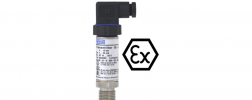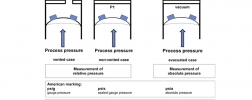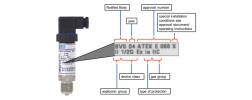The field of application or the suitability of a pressure sensor for a hazardous area is designated by the marking on the device. As a matter of principle, intrinsically safe pressure sensors marked Ex ia can be used in zone 0 (the "most dangerous" area), whereby …
Pressure sensor
Fields of application for pressure sensors 3 – Absolute pressure sensors: why is it necessary to use absolute pressure sensors or pressure transmitters
Stefan Heusel | PressureElectronic pressure sensors usually measure the change in pressure through the deformation of a diaphragm. If this diaphragm is exposed to the process pressure on one side and "vented" on the other side (and thus exposed to the ambient pressure), the deformation is …
Fields of application for pressure sensors 2 – non-vented gauge pressure sensors: when unvented pressure sensors or transmitters are the best choice
Stefan Heusel | PressureIn most applications, gauge pressure measurement is required and therefore pressure sensors and pressure transmitters that measure pressure against the prevailing ambient pressure are commonly used for this. Those pressure sensors typically have a venting hole to …
Fields of application for pressure sensors 1 – vented gauge pressure sensors vs. absolute pressure sensors
Stefan Heusel | PressureThe user is often faced with the question: What kind of pressure sensor should I use - a relative/gauge or an absolute pressure sensor? From food processing to petrochemical plants, to plastic injection moulding and many other industrial applications, pressure …
Marking of pressure sensors and transmitters according to ATEX Guideline 94/9/EC – how to read the ATEX label on pressure sensors
Stefan Heusel | PressureIf pressure sensors, pressure transmitters and other field equipment are used in the vicinity of flammable gases or dust, they may be subject to marking in accordance with the ATEX product guideline 94/9/EC. ATEX requires the type label of the sensor to include the …




